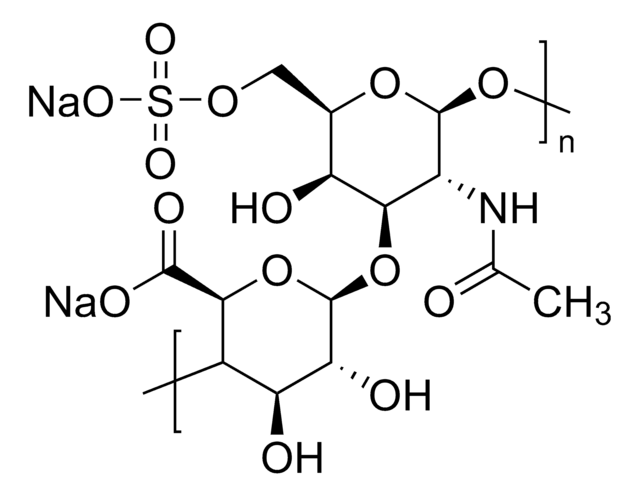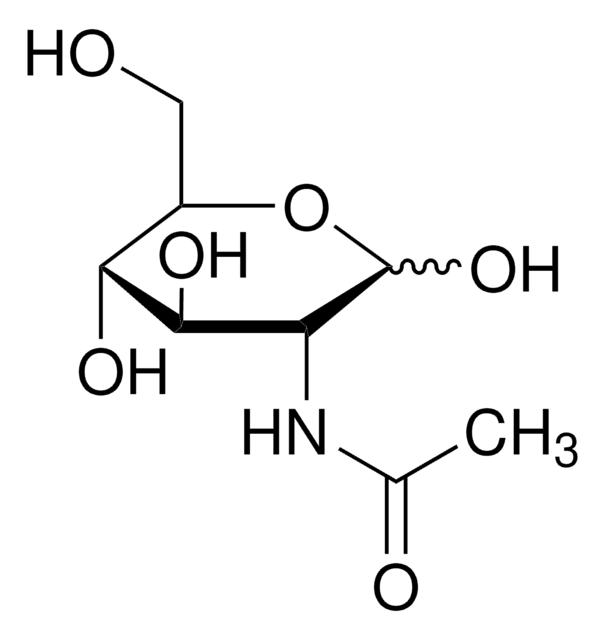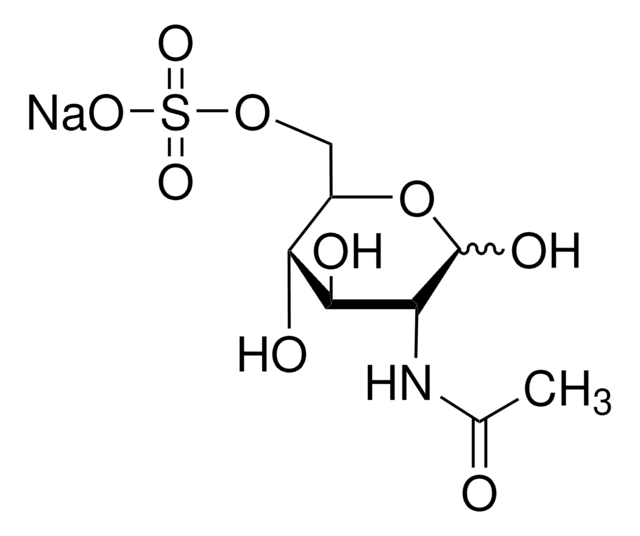Kluczowe dokumenty
11631
D-Glucosamine 3-sulfate
≥98.0% (TLC)
Synonim(y):
GlcN-3S
About This Item
Polecane produkty
Poziom jakości
Próba
≥98.0% (TLC)
Formularz
powder
aktywność optyczna
[α]/D 55.0±2.0
metody
thin layer chromatography (TLC): suitable
temp. przechowywania
−20°C
ciąg SMILES
N[C@H]1C(O)O[C@H](CO)[C@@H](O)[C@@H]1OS(O)(=O)=O
InChI
1S/C6H13NO8S/c7-3-5(15-16(11,12)13)4(9)2(1-8)14-6(3)10/h2-6,8-10H,1,7H2,(H,11,12,13)/t2-,3-,4-,5-,6?/m1/s1
Klucz InChI
UZUBNIPDAIVWIE-IVMDWMLBSA-N
Zastosowanie
Opakowanie
Inne uwagi
Kod klasy składowania
11 - Combustible Solids
Klasa zagrożenia wodnego (WGK)
WGK 3
Temperatura zapłonu (°F)
Not applicable
Temperatura zapłonu (°C)
Not applicable
Środki ochrony indywidualnej
Eyeshields, Gloves, type N95 (US)
Wybierz jedną z najnowszych wersji:
Masz już ten produkt?
Dokumenty związane z niedawno zakupionymi produktami zostały zamieszczone w Bibliotece dokumentów.
Produkty
Glycosaminoglycans are large linear polysaccharides constructed of repeating disaccharide units.
Nasz zespół naukowców ma doświadczenie we wszystkich obszarach badań, w tym w naukach przyrodniczych, materiałoznawstwie, syntezie chemicznej, chromatografii, analityce i wielu innych dziedzinach.
Skontaktuj się z zespołem ds. pomocy technicznej



